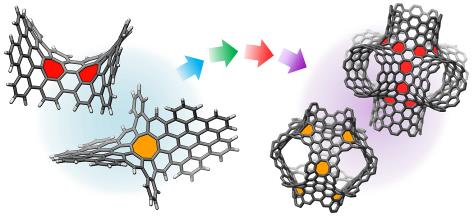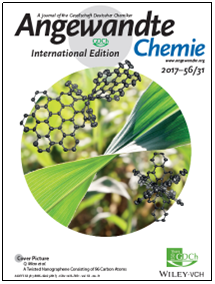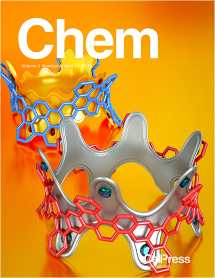|
2. Organic semiconductors and organic electronic devices Molecular Engineering: We design and synthesize novel organic semiconductors with control of electronic structures and molecular packing in the solid state. One successful example of this approach is systematic studies on a family of N-heteropentacene molecules as organic semiconductors for applications in organic field effect transistors emphasizing structure-property relationship. We also develop organic semiconductors with non-planar π-backbones to explore new molecular packing modes and functions that are typically unavailable to flat π-molecules. Interface Engineering: We fabricate organic electronic devices, including organic field effect transistors (OFETs) and OFET-based sensors, with focus on device interface properties, and characterize device performance to gain a better understanding of the relationship between structures and functions. One example of this approach is a self-assembled monolayer of cyclohexyl-terminated phosphonic acids as a dielectric surface for interface engineering of high-performance OFETs. |
|
Research |

|
Induced crystallization of rubrene in thin film transistors Advanced Materials, 2010, 22, 3242–3246 |
|
OFET-based chemical and biological sensors Chem, 2018, 4, 1416–1426 |

|
Self-assembled monolayers of cyclohexyl-terminated phosphonic acids for interface engineering of high-performance OFETs Advanced Materials, 2014, 26, 7190–7196 |
|
Chlorinated tetraazapentacene with a record-high electron mobility for n-channel OFETs Advanced Materials. 2018, 30, 1803467 |


|
Toward negatively curved carbons Accounts of Chemical Research, 2018, 51, 1630–1642 |
|
1. Curved polycyclic aromatics and topologically unique molecular nanocarbons |
|
A Twisted Nanographene Consisting of 96 Carbons Angew. Chem. Int. Ed. 2017, 56, 9003–9007 |



|
Chiral and Armchair Carbon Nanobelts Chem, 2019, 5, 838–847 |
|
Curved polycyclic arenes, which are molecular nanocarbons of defined curvature, play an important role in bottom-up approaches to theoretical carbon allotropes or known carbon allotropes that, however, cannot be synthesized in a precise manner. Two groups of curved polycyclic arenes of particular interest to us are negatively curved nanographenes and carbon nanobelts. By introducing seven- and eight-membered rings to polycyclic aromatic frameworks, we designed and synthesized a series of negatively curved nanographenes, which are segments of theoretical carbon allotropes of negative curvature. Carbon nanobelts, which are belt-shaped polycyclic aromatics consisting of fused benzene rings, can in principle serve as templates or precursors for chirality-specific synthesis of carbon nanotubes, which remains the top challenge in science of carbon nanotubes and a bottleneck limiting their applications. We synthesized the first chiral carbon nanobelt and a new type of armchair carbon nanobelt. |
|
Our laboratory designs and synthesizes novel polycyclic aromatic molecules with interesting structures and useful applications, exploring novel molecular nanocarbons and developing high-performance organic semiconductor materials and devices using tools from organic synthesis, supramolecular chemistry and surface chemistry. |

|
Miao Research Group, Department of Chemistry, CUHK |


|
Research |
|
Research |